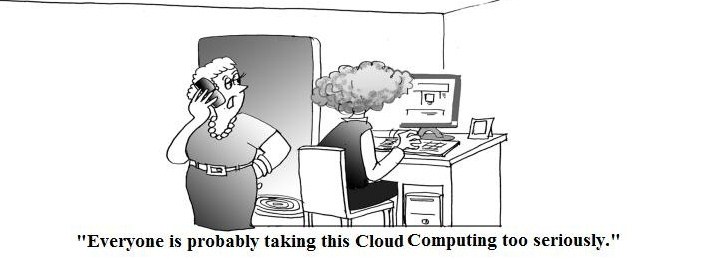What and When Can We Expect From The Cloud?

The concept of cloud computing is Quite fashionable today and it is treated differently. It is the image of computing in which IT resources with a high degree of scalability are provided to users in the form of services through the Internet. A pool of managed computing infrastructure with a high degree of scalability is the provision of paid services on the placement and implementation of client applications.
And as per Wikipedia “cloud computing treats simple Technology Data Processing, in which software is made available to the user as an Internet service”.
In fact, “cloud” is a metaphor for a remote data center computing, to which access is given on the basis of payment for pay-as-you-go (pay per actual use of the service computation). Thus, the software is actually provided to the user as a service. Cloud computing user does not need to worry about any infrastructure, nor on the actual software, “cloud” successfully hides all hardware and software components.
And Intel shares the concepts of architecture and cloud-services. The first category includes the components of a dynamically scalable capture of resources, based on virtualization technology or software environment with horizontal scaling. The second – as a rule, paid services that users receive via the Internet. “Cloud” architecture can be constructed within the local network. Unlike traditionally distributed or service models, cloud computing is based on a dynamic architecture and the user pays only for the functionality, which really enjoys. The scope of cloud computing may be different – this, for example, online mailboxes, social networks, specialized search engines, online financial services cloud computing and other applications of Web 2.O.
Despite the fact that cloud computing is the concept that is still relatively young, already made projections of its future development. In the first (2007-2011), there will be many pioneers, and their new development will ce launched in the market rapidly. Further, roughly from 2011 to 2013, will begin a consolidation phase – some vendors leave the market, while others merge with more successful competitors. And in 2013 comes the “golden age” cloud computing.
Among the pioneers of the market of cloud applications and services, including quite large manufacturers, such as Google, IBM, Microsoft, SAP, Oracle, etc. Microsoft last fall announced a platform for Windows Azure, based on Windows 2008 Server.
Along with additional services, including Windows Live, a portal solution to SharePoint, this OS will be a comprehensive solution for creating and deploying applications for online computing. A similar system along with cloud hosting services is introduced by ESDS – its Virtual Data Center Operating System platform create and manage the data center.
A number of solutions (both hardware and software) in the cloud computing is based on the architecture of Nehalem. The Dynamic Power Node Manager, and Data Center Management Interface, allows not only to optimize power servers, but also reduce the cost of managing data centers.
Communication products supporting virtualization and cloud computing is delivered by Cisco. Cisco Nexus family of switches replenished Nexus 7000 Series, 5000 and 2000 models. Model Switch Cisco Nexus 7018 chassis is equipped with 18 slots and supports up to 512 ports Ethernet. Nexus 5010 also supports Ethernet, and Fibre Channel, and the model of Nexus 2000 is to expand the bandwidth of a server farm.
Many IT experts say that in the near future, cloud computing will be included in the top list of technological trends, and certainly could become a very profitable service for those companies that will seriously deal with them and constantly develop them for better benefits.
- How Cloud Computing Is Changing The Labor Market - March 25, 2015
- Adopting Infrastructure as a Service Can be a Good Deal - March 17, 2015
- Will Virtualize? Take These Six Points Into Consideration - March 12, 2015